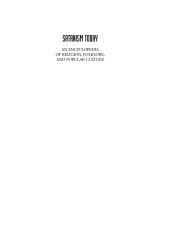I. VAMA MARGA Foundations Of The Left-Hand Path - staticfly.net
I. VAMA MARGA Foundations Of The Left-Hand Path - staticfly.net
I. VAMA MARGA Foundations Of The Left-Hand Path - staticfly.net
You also want an ePaper? Increase the reach of your titles
YUMPU automatically turns print PDFs into web optimized ePapers that Google loves.
complex. Since it has frequently been wondered if there is any link between<br />
the leftwardness of the Vama Marg and the political designation "left-wing",<br />
we should first establish that there is no connection at all between the two.<br />
<strong>The</strong> specific numinous significance of leftwardness can be traced<br />
32<br />
back to man's earliest known religiomagical symbolism in ancient<br />
Mesopotamian Sumer, but seems to be an almost universal concept.<br />
Tellingly, the ancient Sumerians unfailingly spoke of "right and left" in that<br />
order, believing that it would invite bad luck to mention the left first. In the<br />
modern world, this idea survives in such superstitions as that of placing<br />
one's right shoe on before the left. Mesopotamian figurines of protective<br />
deities were always portrayed striding forward with the left leg, the better to<br />
move against the left-dwelling monstrous creatures that populated creation's<br />
shadow side.<br />
In Sumerian divination, the right side of the moon was thought to be<br />
fortunate, while the left was ominous. In this earliest of documented human<br />
civilizations, greetings, blessings and eating were always carried out with<br />
the right hand, which was associated with purity, a tradition that still<br />
survives in India. <strong>The</strong> Indian goddess Kali, the darkest spectrum of Shakti in<br />
her many-armed wrathful form, is most frequently depicted as making ritual<br />
gestures of blessing with her right hands, while brandishing a sword and<br />
decapitated head in her left hands – the simultaneously purifying and terrible<br />
nature of the sinister current.<br />
It has been speculated that the ancient association of right with good<br />
and left with evil may simply mirror the fact that most people are righthanded<br />
– a primitive assumption that what is normal must be virtuous, while<br />
what is unusual must be wrong. Parents whose children are born left-handed<br />
will often take measures to assure that this anomaly is corrected, or "set<br />
right". Shaking hands with the left hand is still actively avoided, even by<br />
people normally untouched by superstition. <strong>The</strong>refore, to deliberately turn<br />
left is to deviate from what would seem to be the body's natural course and<br />
tempt fate. Simply going left, when tradition tells us that right is the only<br />
way to go, is the first taboo violation of the left-hand path, the initial<br />
separation from the habitual inclinations of humanity.<br />
Symbolically, to incur upon one's self the powers of the left is to<br />
embrace the adverse side of existence instinctively shunned by the<br />
preponderance of humans. <strong>The</strong> left is the Other, the unknown, a direction<br />
that is everywhere known as the "wrong" way to go, in contrast to the welltrod<br />
path of the right.<br />
Many of the world's languages reflect this deeply rooted aversion to<br />
leftwardness. <strong>The</strong> modem English word "left" derives from the Old English<br />
lyft, which meant weak or palsied, connected to "leper", among other<br />
unpleasant associations. Another Old English word for "left" was winestra,<br />
which meant "friendlier". This word provides us with an interesting case of<br />
the magical use of words. By euphemistically referring to the feared left side<br />
as friendly, the speaker hoped to magically appease the destructive forces of<br />
leftwardness, a practice akin to calling a snarling wolf "nice doggy."<br />
<strong>The</strong> Latinate word "sinister", of course, suggests much more than<br />
33<br />
literal leftwardness – it carries distinctly negative connotations of its own.<br />
It's also a common synonym for the malefic, a meaning it has held since<br />
ancient Roman soothsayers first interpreted phenomena situated on the left<br />
(sinistrum) to be unfavorable omens. Those on the right (dexter, whose<br />
etymological connection with the Sanskrit daksina is obvious) were thought<br />
to be benevolent. No doubt the ancient association between the words left<br />
and sinister has increased the impression that the left-hand path is<br />
intrinsically evil.<br />
So, is the left-hand path only to be understood as one half of a
















